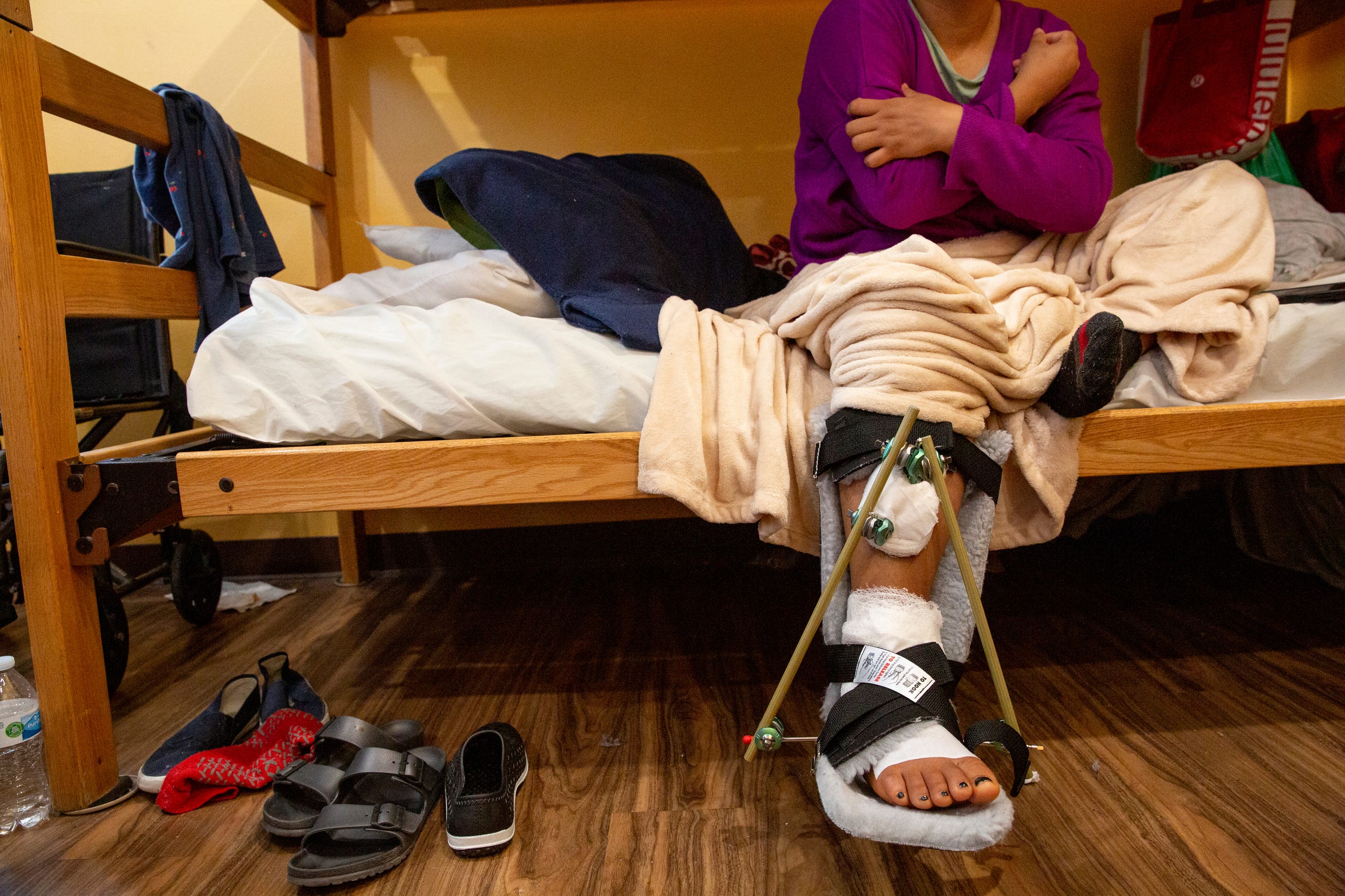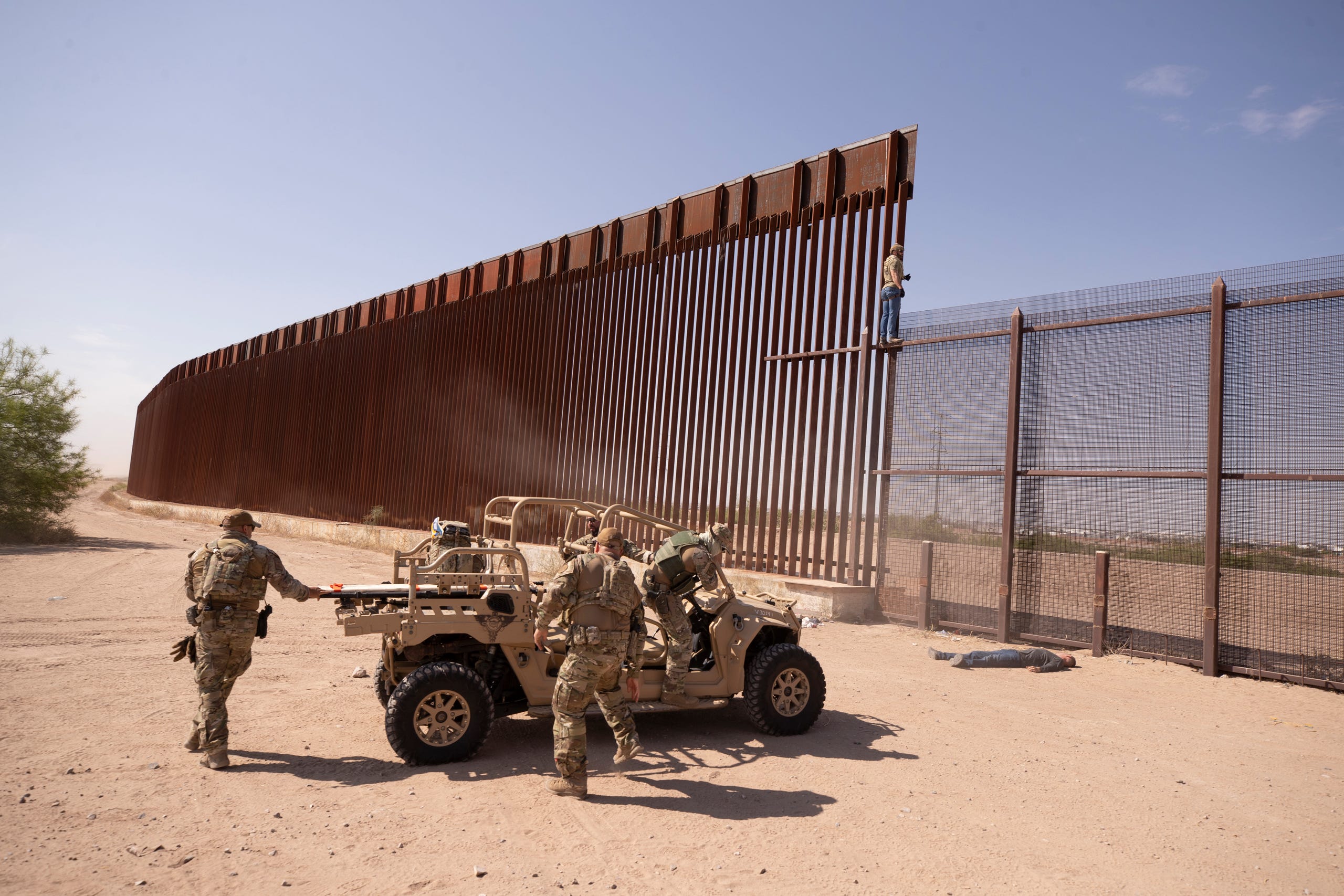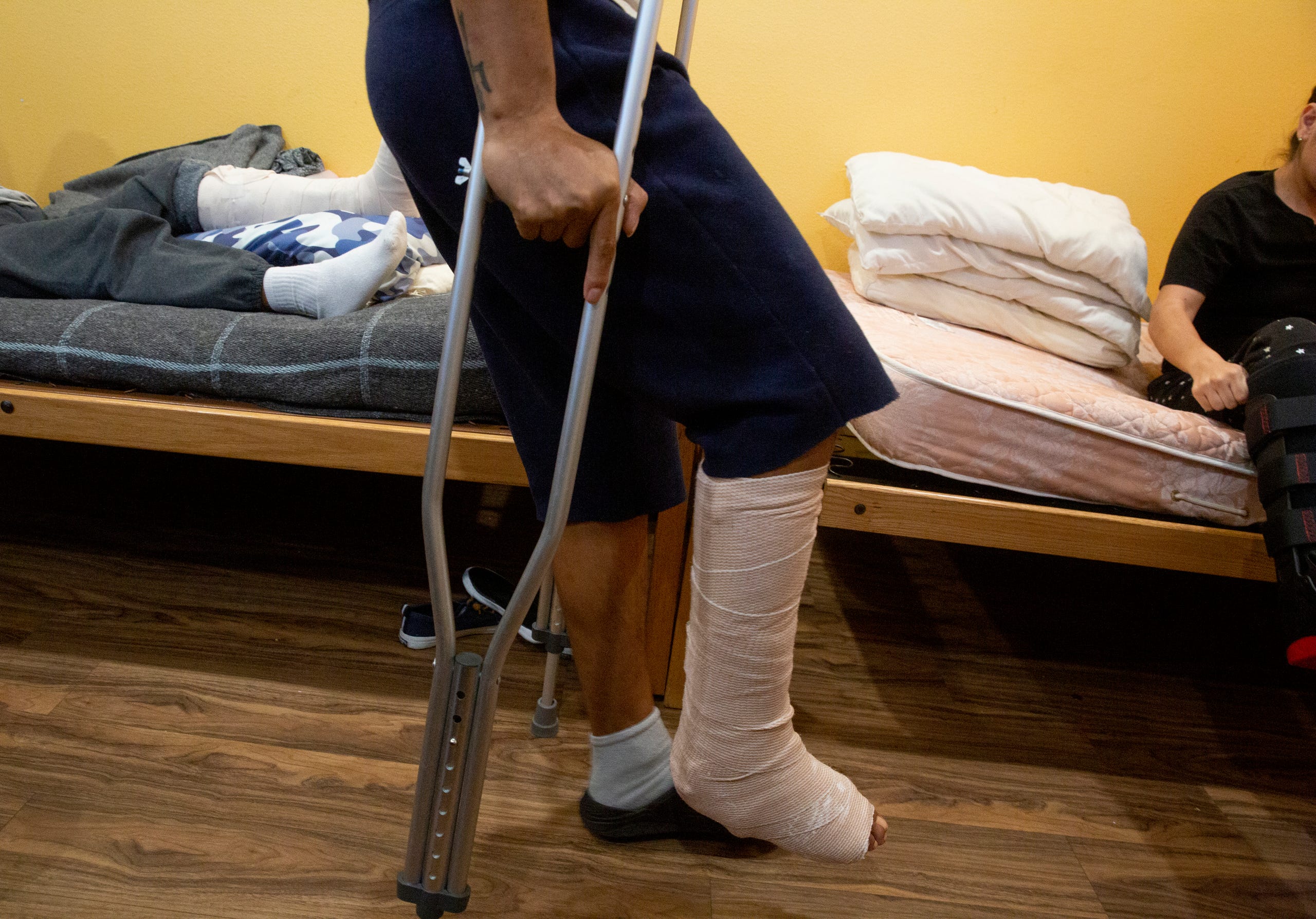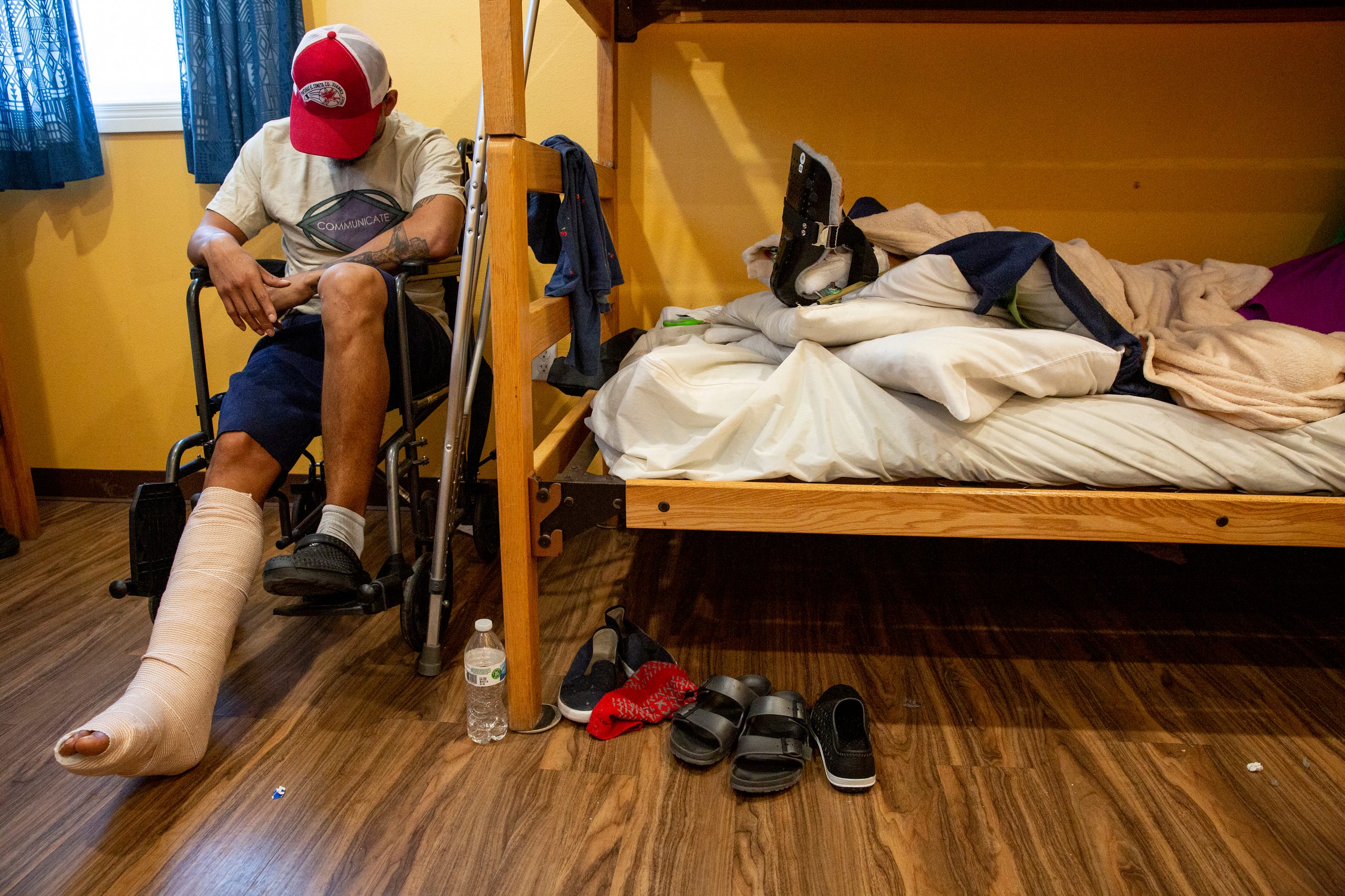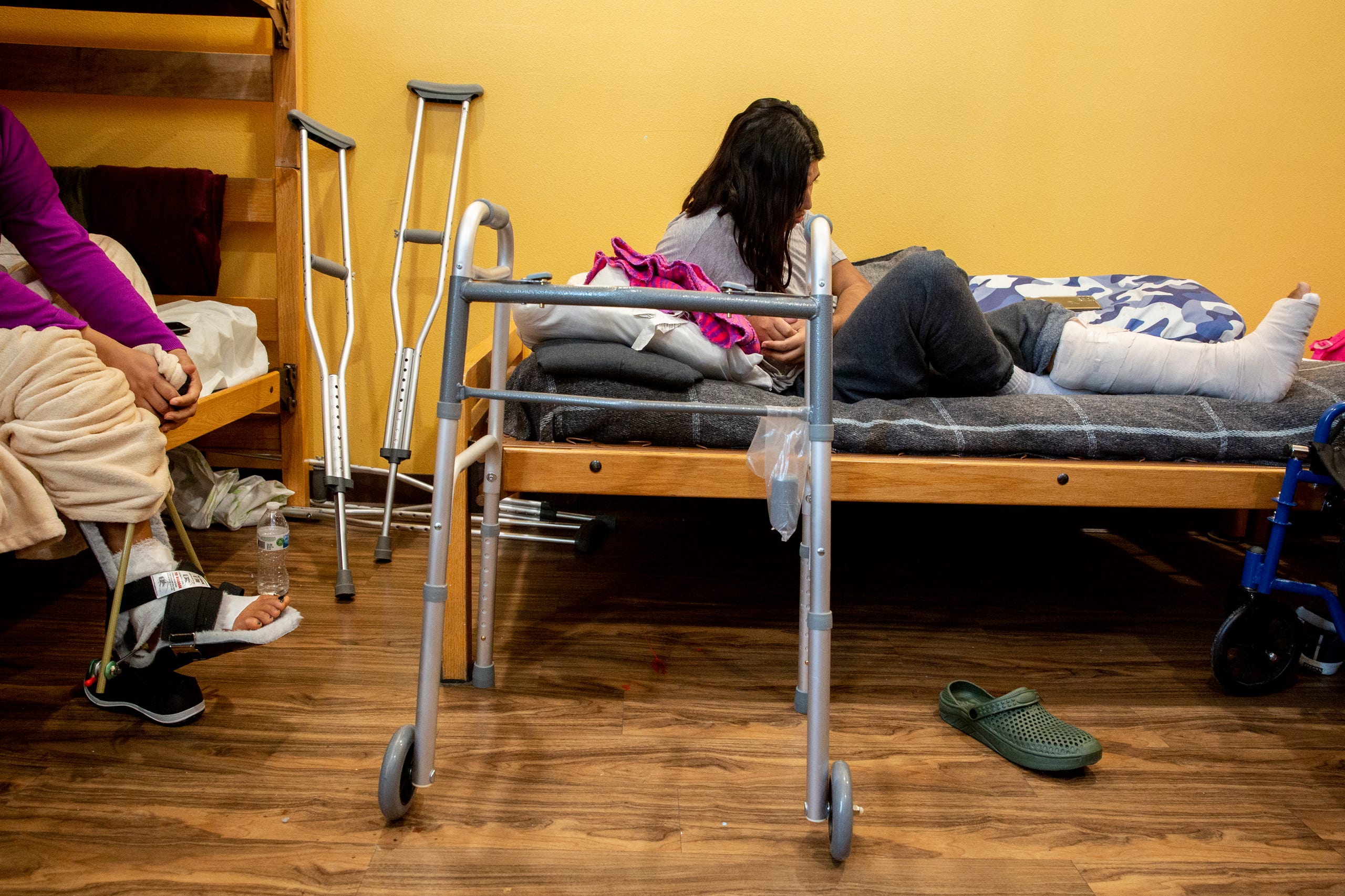Trump said the border wall was unclimbable. But hospitals are full of those who’ve tried.

“I hugged the wall,” she said. “My hands were bleeding from the rough edges. The guide was screaming, ‘Let go! Let go!’ I dropped down and felt my bones break.”
Zavala, a young mother from Mexico, lay on a bed at an El Paso shelter on Wednesday in a room with four other migrants who survived terrifying falls from a barrier nearly three stories tall. Among them, they had undergone eight surgeries in the past month. Zavala’s right leg was fastened with an external fixator that resembled scaffolding.
Emerging public health data affirm what border county hospital trauma surgeons have been suspecting since the U.S. government began raising the height of the Southwest border wall to slow migration: the 30-foot fence causes more injuries and is far deadlier, than any barrier before it.
Physicians say the falls and fatalities are a public health crisis for border communities at a time when the Biden administration, and the state of Texas, are investing in new border fencing amid record apprehensions of migrants.
County hospitals in El Paso and San Diego are receiving patients with border wall fall-related trauma at a rate of one per day in 2023, according to their chief trauma surgeons. The injuries range from complex lower extremity breaks including shattered ankles, foot and leg bones to life-altering spinal and cranial injuries.
Border wall falls carry “a mortality rate that is higher than COVID in the general population,” said Dr. Susan McLean, surgical ICU medical director at University Medical Center in El Paso. “And it is something that is happening all up and down the border.”
The Biden administration in October announced it would waive more than two dozen environmental protection laws to construct 20 miles of new border fencing in south Texas this year, breaking a presidential campaign promise to halt construction of new barriers. The fence proposed for Starr County has been described as shorter and “moveable.”
But the Department of Homeland Security is already replacing an 18-foot fence with the 30-foot version near San Diego. DHS didn’t immediately respond to USA TODAY’s requests for comment regarding whether the agency takes into account public health outcomes when designing the style or height of border barriers.
In a statement earlier this year on the increase in migrant deaths at the border, Customs and Border Protection said: “Crossing the border illegally is inherently dangerous. CBP urges migrants to seek lawful pathways into the United States and not to place their lives in the hands of human smugglers, whose priority is profit.”
Texas also is poised to expand its border security measures. In addition to the concertina wire and buoy barriers in the Rio Grande built under Gov. Greg Abbott’s Operation Lone Star, the Texas House last week approved a $1.54 billion Senate proposal to fund the construction of 50 additional miles of border fencing.
“Texas will continue to utilize every tool and strategy to deter and repel illegal crossings between ports of entry as President Biden’s dangerous open border policies encourage migrants from over 150 countries to illegally enter the country,” Abbott spokesman Andrew Mahaleris said in an emailed response to questions on migrant deaths.
‘This wall can’t be climbed’
When DHS began construction on a 30-foot fence in southern California in 2019, then-President Donald Trump described the barrier as impassable: “This wall can’t be climbed,” he said during a tour at Otay Mesa.
Border Patrol officials are rarely so starry-eyed. CBP prefers to use the language “border barrier system” in agency communications to refer to fencing, lighting, cameras, technology and roadways – elements Border Patrol agents say slow, but don’t stop, migrants from crossing the border unlawfully and trying to evade apprehension.
The injured women at the shelter, each with a badly broken foot, ankle, or leg, climbed the 30-foot fence in the same way: using makeshift rope ladders of braided cord and plastic pipe, the kind favored by smugglers in the El Paso area.
They said they didn’t realize they’d be forced to climb the wall; or that it was so high, or that there wouldn’t be a way down on the U.S. side. They didn’t believe, either, that they’d be eligible for a visa and never considered presenting at a port of entry.
Once there, in the hands of dangerous traffickers, there was no turning back.
“They don’t treat you like a queen,” Zavala said. “You have to climb.”
She thought about her toddler son, his delicate health and the money she needed to pay for his frequent medical care. She let go and landed face down, her foot twisting unnaturally. She said she only felt cold at first and began crawling north on all fours.
Border wall fall trauma
From 2000 through 2019 – when construction began on the 30-foot fence in California – El Paso’s University Medical Center recorded a single death from a border wall fall, McLean said.
Last year alone at UMC, nine patients died after a border wall fall. Another 326 people were treated for injuries for a mortality rate of 2.8%, she said.
The University of California, San Diego Health medical center has documented a similar rate of border wall fall-related trauma: 345 patients this year, January through October, said Dr. Jay Doucet, chief of trauma. The human and financial costs keep rising, he said.
“October was the worst month we have seen: 70 major trauma victims,” he said. “It’s more than two a day.”
There is no comprehensive count of border wall fall-related injuries, Doucet said.
Trauma surgeons – especially at university-run hospitals in counties along the U.S.-Mexico border – have been collecting data independently to better understand a public health problem they say trumps politics.
The increase in border wall fall-related trauma rose in San Diego and El Paso after 2020, coinciding with the expansion of the higher 30-foot fence and a surge in migration. Border Patrol migrant encounters rocketed from 400,000 in fiscal 2020 during the pandemic to more than 2.4 million in fiscal 2023.
“We noticed starting right around 2020 that the numbers had gone up,” McLean said.
“It qualifies as a public health problem,” she said. “It’s a large population, and it’s a preventable problem with serious consequences.”
McLean and emergency room doctors have developed some best practices, she said, including regularly ordering CT scans of the spine as migrants often have spinal injuries they may not be aware of yet.
The height of the wall can be lethal. Vicki Gaubeca, associate director of U.S. immigration and border policy for Human Rights Watch, argues that it’s by design.
“The rationale is that at 30 feet your body naturally experiences vertigo and it makes it easier to fall off the wall,” she said. “We’re talking about the equivalent of a three-story building. It almost seems intentional that they built it that high.”
Many migrants arrive at the border in poor condition after arduous journeys overland, and their health complicates their path to healing, Doucet said.
“Their rate of infection is higher and their immunity is poor,” he said. “They stay in the hospital much longer; their surgeries are more difficult. Their long-term healing is in doubt. They don’t come back to clinic appointments. They don’t get rehab; often they have to take out their own staples.”
All this means local residents are waiting longer for care, as well, he said.
There aren’t enough orthopedic surgeons at the hospital to meet the increased need in San Diego. Patients with spinal fractures, whether local resident or migrant, are waiting up to five days for surgery now instead of 2.5 days before 2019, he said.
“When the wall was built, comments were made that the wall wasn’t climbable,” Doucet said. “No one anticipated the number of injuries that were going to occur. The number of injuries appears to increase regardless of administration.”
‘If you are fighting for your life’
Zavala could spend weeks in the shelter as she waits to heal.
The pain in her lower leg throbs and shoots up to her hip, she said. She was scheduled to undergo a second surgery. But she said she knew she was lucky: the other men in her group stayed with her in the desert until Border Patrol agents found them and put her in an ambulance.
Immigrant advocate Crystal Sandoval, director of crossborder strategies at Las Americas Immigrant Advocacy Center in El Paso, has worked with hundreds of migrants and refugees at the El Paso-Juárez border and has seen them face even the most dangerous obstacles – no matter the consequence.
“The wall is definitely not a deterrent,” she said.
“If you are fighting for your life, if you are fighting not to starve to death, for the future of your children and your family, I don’t think a wall or anything is going to stop you,” she said. “It’s like saying you are going to forget hope.”
Source:eu.usatoday.com/story/news
